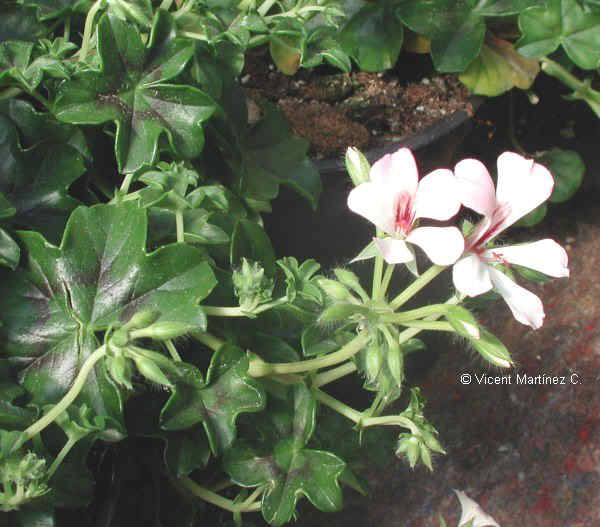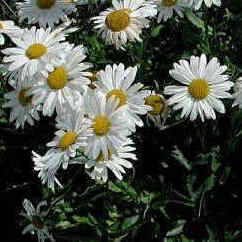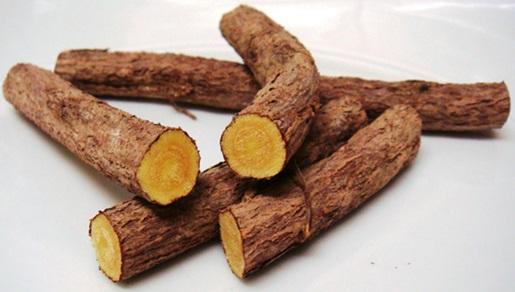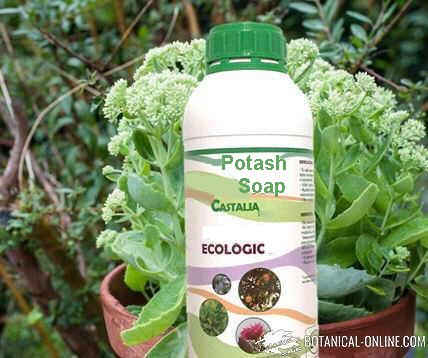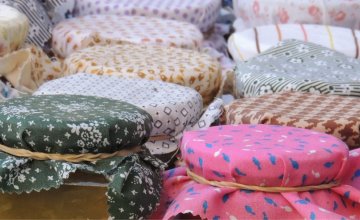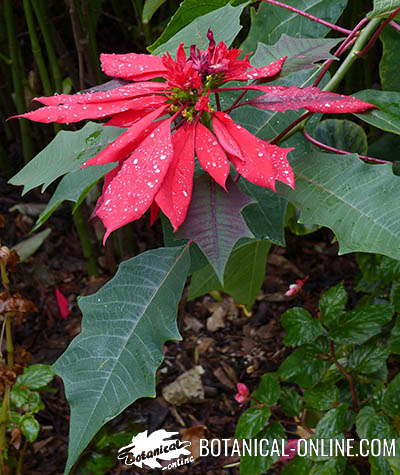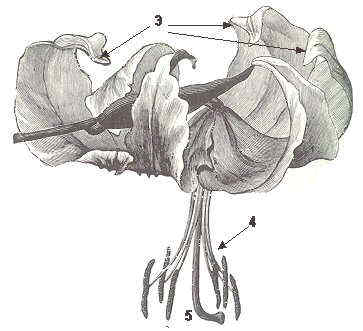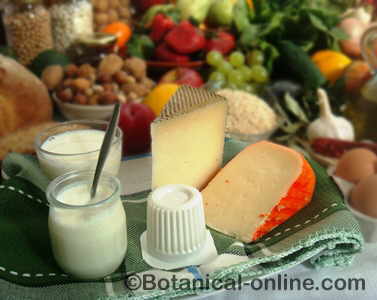Contents
Main complex carbohydrates
Main types of complex carbohydrates
From a scientific point of view the complex carbohydrates are composed of disaccharides, oligosaccharides and polysaccharides.
- Disaccharides consist of two simple sugar molecules grouped.
- Oligosaccharides are carbohydrates that contain between 3 and 10 monosaccharides.
- Polysaccharides are carbohydrates formed by the union of many monosaccharides or disaccharides.
From a dietary point of view, oligosaccharides and polysaccharides have been considered complex carbohydrates, excluding the disaccharides that have been included in the group of simple carbohydrates. (More on them in “simple carbohydrates”, listed above)
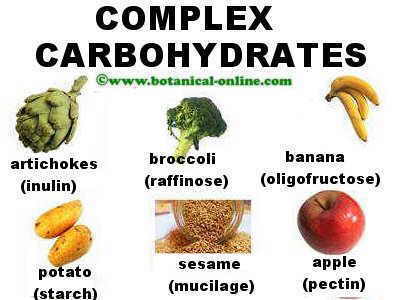 Some foods containing complex carbohydrates
Some foods containing complex carbohydrates
Main complex carbohydrates belonging to the oligosaccharides
Among the main complex carbohydrates belonging to the oligosaccharides we have the following:
- The trisaccharides (oligosaccharides composed of three monosaccharides) Among them raffinose.
- Raffinose: A carbohydrate complex formed by binding of fructose, galactose and glucose. It appears in the composition of foods such as beans, Brussels sprouts, cabbage, broccoli, asparagus, whole grains and vegetables. The body decomposes raffinose in the large intestine by the action of an enzyme called agalactosidase, produced by the action of spoilage bacteria.
This decomposition is responsible for the production of gases, such as methane, carbon dioxide and hydrogen are responsible for the flatulence that eating these foods often produce.
- Tetrasaccharides (oligosaccharides composed of three monosaccharides) The most important are:
- Stachyose: A complex carbohydrate consisting of two molecules of galactose, one glucose and one fructose. It appears in many plants, especially legumes, like beans or soybeans. Because it does not fully decompose in the intestine, like raffinose, it is responsible for flatulence problems.
- Acarbose: A complex carbohydrate that is extracted from the bacterium Actinoplanes utahensis. It is used as a treatment for diabetes, since this component inhibits enzymes that break down complex carbohydrates into glucose, particularly the activity of the enzyme alphaglucosidase. It is taken a moment before starting to eat.
As described side effects, it has increased flatulence and indigestion, because it does not decompose in the intestine. Problems have also been described in the liver, that disappear without this drug.
Other oligosaccharides
These include:
- Oligofructose: It is a complex carbohydrate formed by fructose chains. Among foods rich in this component we have bananas, onions, chicory, garlic, asparagus, wheat, barley or tomatoes.
- The galacto-oligosaccharides: Formed by galactose chains. The main food is milk.
Main complex carbohydrates belonging to polysaccharides
Among the main complex carbohydrates belonging to polysaccharides we have the following:
- Starch: The substance of plant reserves. It consists of amylose and amylopectin. It is the main carbohydrate in the diet. The body can break it down into simple sugars by enzymes called amylases, which are mainly found in the saliva and the pancreas.
It is found in greater amounts in the seeds of cereals, roots (carrots, beets, etc) and tubercles (potatoes, sweet potatoes, cassava, etc)
- Glycogen: The main form of complex carbohydrate that is stored as energy reserves in animals. It can also be stored in microorganisms such as bacteria and fungi. It consists of chains of glucose and is stored mainly in muscle and liver. Foods that contain this component are oysters and mussels. It is water soluble, therefore it disappears in most foods once they are handled.
- Cellulose: It is the substance that forms, together with lignin, the structure of plants. This consists of glucose molecules. It is not digestible by the human body, although it is important to the diet because it is a type of fiber very useful for our body. Some animals such as ruminants and termites, have in their gut the microbes needed to digest this material.
- Hemicellulose: It is another structural element of the vegetal cell that accompanies the cellulose. It is a type of non soluble hydrate. Whole grains are the foods that contains more amount of them.
- Pectin: It is a complex carbohydrate that appears on the walls of plants. This consists of galactose, arabinose, and glucose porxilasa. It is used commercially as gelling agent and thickener in jellies and jams. From a dietary point of view is considered a soluble fiber that has a fundamental importance in controlling the feces and in preventing many intestinal diseases. Pectin rich foods are carrots, eggplants, pumpkins, figs, bananas, pears or the plums.
- Mucilage: These are proteins combined with carbohydrates produced by plants. Some organisms also excrete mucilage from sugar residues. (Exopolysaccharides)
Mucilage is produced by the plants act as protectors of cells, such as water storage and reserve substances (the cacti and succulents plants are real examples of this) The mucilage can also be used to protect plants by preventing the entry of microorganisms in their wounds.
Other times, they appear in abundance in the seeds of certain plants, like carob bean, plantain, flax or mustard, in fruits as fig and all the plant as borage or purslane, in vegetables such as green beans or lichens, such as Iceland moss. One plant that has more is the algae agar-agar.
Mucilage plays a major role in seed germination. (In contact with water, they increase volume and maintain a layer of moisture around the seed that facilitates their germination) and seed dispersal (seed engages to disperser element)
Some roots the mucilage used to promote their introduction into the ground. Comfrey is a clear example of how a component can produce this result. Sometimes these secretions are a means to catch prey, such as with the mucilage secreted by carnivorous plants.
From a dietary point of view they act like soluble fiber (More information on the mucilage)
- Xylan: Found in plant cell walls and some algae. It consists of xylose units. It acts as a fiber.
- Chitin: Part of the cellular structure of fungi and exoskeleton of arthropods. It is not digestible by the human body, although it can be broken down into sugar and ammonia by bacteria and fungi because they have enzymes called chitinases.
- Inulin: It is a complex carbohydrate formed by fructose chains. It is a component that appears essentially in the roots of some plants. Among the richest foods in inulin we have the following: Dandelion, chicory, garlic, artichoke, leek, onion or asparagus.
Instead of great amounts of animal meat, we can find these components in vegetables, fruits, dried fruits or cereals.
![]() More information on carbohydrates.
More information on carbohydrates.

